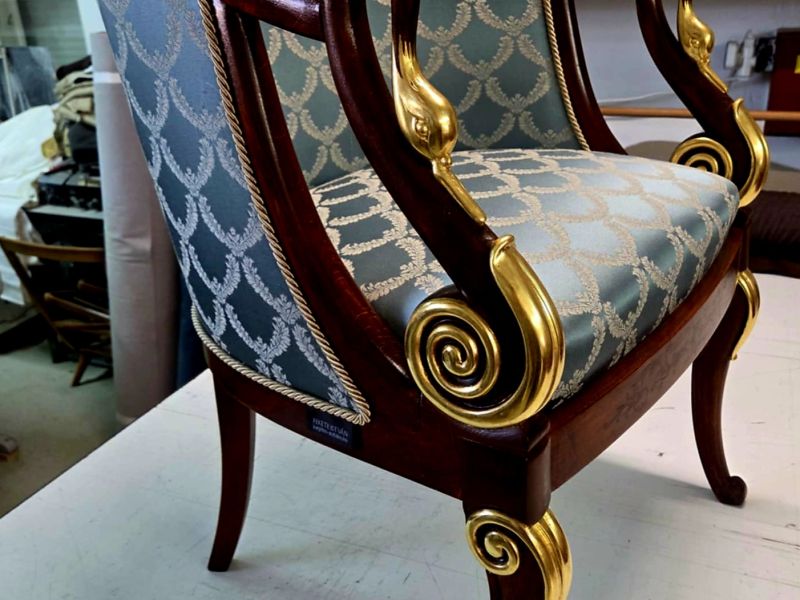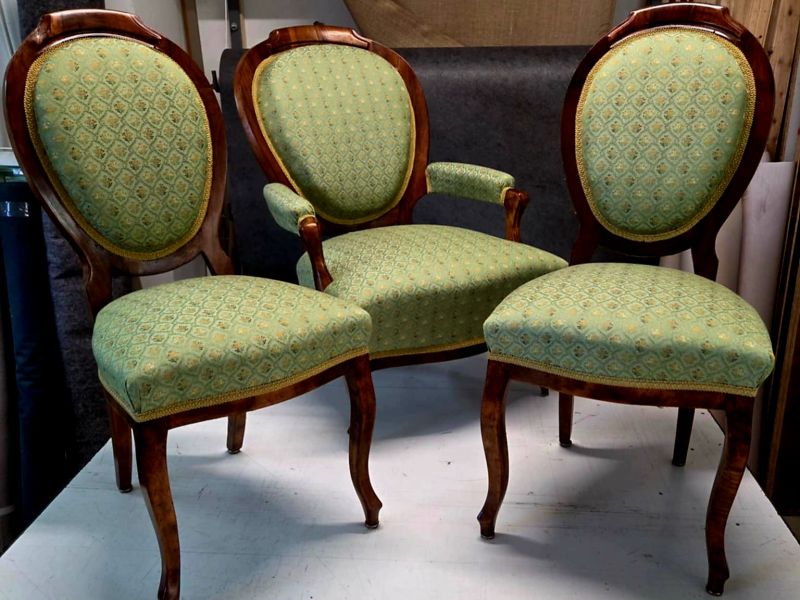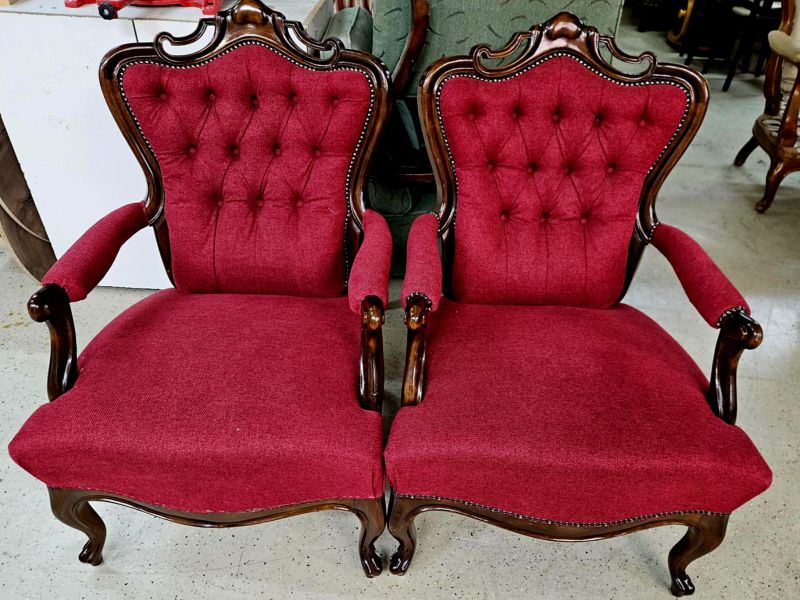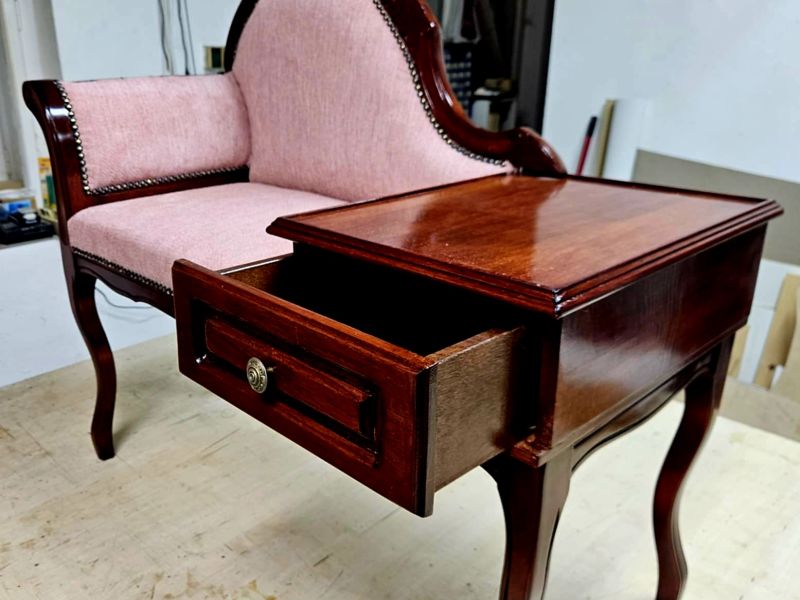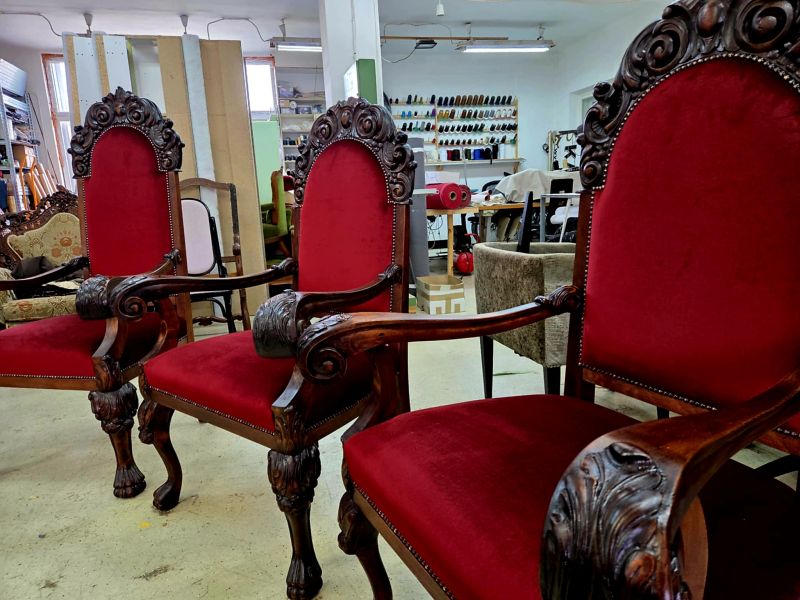Straps
The strap is the most important part of the furniture’s supporting frame, forming the basis of its suspension.
We work with basically 3 types of straps, distinguished by their materials. These can be made of nylon, rubber and linen.
In traditional upholstery, only linen straps are used, since one of the characteristics of antique furniture is that it was made with linen straps.
In modern upholstery techniques, nylon and rubber straps are used, the former for a harder, the latter for a softer seat pan.
Springs
Furniture making as a handicraft profession has existed since ancient times, its continuous evolution and technical adaptation have always used the achievements of the given era to create springy surfaces.
In ancient times, for example, practically any flexible material was suitable for making a spring. Leather, rope and even wood were used, but later they were mostly made of steel.
For traditional upholstery, only so-called double cone, epeda or semi-springs are used.
Modern upholstery uses wave, Bonnell, flat and pocket springs. They can be used to adjust the height and shape of a furniture, therefore, their help to adapt to individual needs.
Spring tying
Tying is only used for traditional upholstery; the seat pan is shaped by nailing the spring into the furniture frame using a linen spar.
There are two tying techniques: the French right-angle and the German diagonal. They are equally common in the industry.
Filling materials
One of the filling materials used in traditional upholstery is seagrass, which is the leaf fibre of an African dwarf palm. It is an excellent choice for mattresses, seating and lying surfaces.
Horsehair, which comes from the manes or tails of a horse, and cotton wool are also used as filling materials.
For modern upholstery, fleece wadding or fleece balls, felt, or sponge or its crumbs are used for the same purpose. There is a wide variety of sponges, available in practically any size and density.
Posaments
Both traditional and modern upholstery use posaments.
It is a collective term that includes burlap, welt cord, sewing thread, fringe, tassel, burl and many other items. Their purpose is actually to decorate the furniture, to finish the taping of the upholstery.
Surface treatments
Traditional furniture surface treatment techniques are mainly varnishing, lubricating and waxing after sanding.
Varnishing is one of the most beautiful coating for wood!
This is technically shellac applied in several thin layers, which is dissolved in Ethanol to achieve the right consistency. It gives the furniture an elegant, shiny appearance.
The lubrication process involves applying several coats of furniture oil to the surface of the furniture with a sponge or brush, carefully allowing the coats to dry before applying the next coat.
To achieve a waxed surface, beeswax balm is applied after the furniture oil.
The lubrication of the wood gives it a natural look, highlighting its beauty and protecting its surface.



